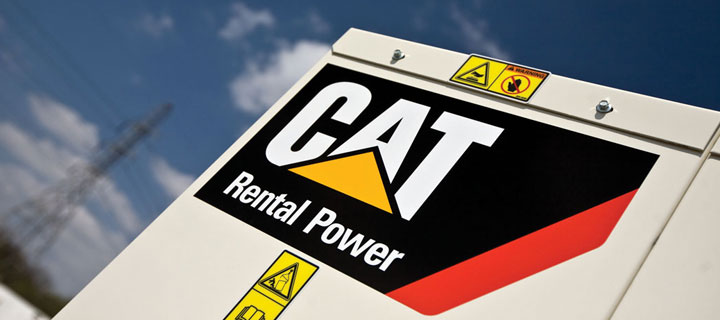
Rental Power Plan
Electricity is never more scarce and significant than after a disaster when lights are out, telephones disabled, and businesses shut down. Many people need food, water, heat, and medical attention. Recovery is nearly impossible without power, yet no one can predict when it will be restored.
Backup power plays a critical role in any disaster recovery, which significantly depends on how well local authorities and private enterprises have planned for such emergencies. Emergency response experts recommend focusing on the most common outcomes of any disaster, specifically loss of electric power. Here are three simple steps that will help you obtain the necessary rental power to keep your facility up and running through a shutdown:
1. Determine Your Electrical Load
Before you rent any equipment, you must know how much power you’re going to need. If you are planning to keep your entire facility operating as usual, you will need to determine your aggregate electrical load. The best way to measure this is to take ammeter readings of your electrical distribution boxes when operating normally at peak load. You can also obtain peak demand readings from your utility bills or the aggregate loads listed on the panels of electrical distribution boxes.
You may need to only power the electrical loads that serve critical functions at your facility. In addition to the life-safety electrical loads powered by your standby generator sets as required by law, critical loads may include lights, computers, process equipment, pumps, and HVAC (heating, ventilating, and air conditioning). We recommend prioritizing your loads to help you decide which ones will require immediate power.
2. Find the Right Rental Equipment Supplier
Rental generator sets can help maintain facilities during power outages, but they are only as reliable as the supplier who backs them up. Some supplier selection criteria may include:
- Inventory – The supplier should have all necessary gensets and equipment in stock, and those who do not have the equipment available must have the ability to import it in the case of an emergency.
- Service and Support – The supplier should be willing to deliver the sets and any related equipment including power cable, transformers, and more. Suppliers should also train local personnel to operate the rental equipment or provide staff for operation, service, and maintenance.
- Location – The supplier should be strategically located to serve major population centers.
- Experience – Suppliers should have substantial experience plus a successful track record of delivering and installing equipment in emergency situations.
- Terms – It is not always possible to secure a 100% guarantee of equipment availability when renting gensets for emergencies. However, some suppliers offer contracts that provide a “right of first acceptance” for a retainer fee, in which they agree not to release that equipment to another entity without the first party’s consent.
Hawthorne Power Systems supplies power generator sets and other related equipment you need in an emergency situation.
3. Prepare for the Basics
There are many things to consider before the power goes out. Here are a few basic questions that should be answered when developing your rental power plan:
How will the gensets get from the dealership to your facility? Although most dealerships deliver, you may need to pick up the equipment yourself, in which case, you must determine what size truck you will need.
Where will you put all of the rental equipment? The largest generator sets are about 8 feet wide and 40 feet long. So if space is limited at your facility, two or more smaller units can be just as efficient.
How will you get cable from the gensets outside your building to electrical distribution boxes inside? Consider installing a weatherhead, or a cable access door in an outside wall of your facility that can be closed when it’s not being used.
Can you store enough fuel near the gensets? An auxiliary tank of fuel with the capacity for at least 24 hours of run-time will reduce service calls from your fuel supplier.
Do you have staff members who can hook up the gensets and ensure they operate properly? If not, make sure your dealership can do the hookup, or at the very least, have them walk your team through the operating procedure.
Planning in Context
A power outage alone can create major logistical challenges as enterprises rush to provide a temporary fix. An effective plan assigns priorities to all major goods and services as well as their delivery. The sooner power is installed, the more efficiently all other materials and services can be delivered to those in need. Emergency planners must ensure that power for all public and private purposes arrives where it is needed, as quickly as possible.
For international shipments, setbacks in customs can delay power delivery. Provisions allowing temporary, duty-free imports of equipment can greatly speed up delivery time. Planners may want to consider proposing special legislation to allow generator sets to be imported for emergencies. In addition, prearranged contracts with freight companies may increase the availability of ships or air transport when a disaster strikes.
As part of your power planning, it may also be a good idea to arrange payment terms with rental equipment suppliers in advance to take the hassle out of financing during emergency situations.
Putting Your Plan to the Test
Once you have your rental power plan in place, we recommend testing it out in simulation drills with the local electric utility. Effective coordination between the utility staff and your emergency personnel can greatly improve the use of rental equipment during an actual emergency. Your rental power plan must be evaluated and updated regularly based on your practice runs to ensure your team is prepared at all times.
Contact your Hawthorne Rental Power Representative to learn more about how we can help you with your emergency preparation plan.
Read Full Article
